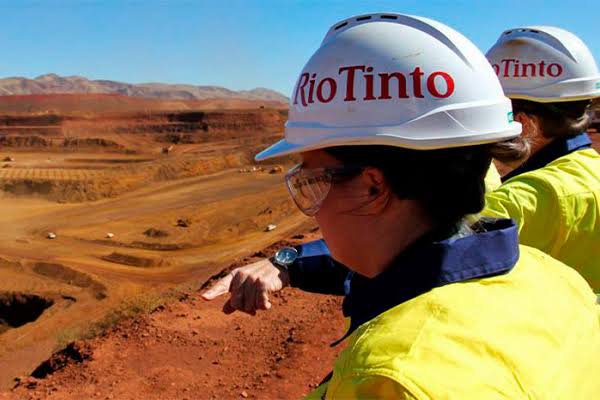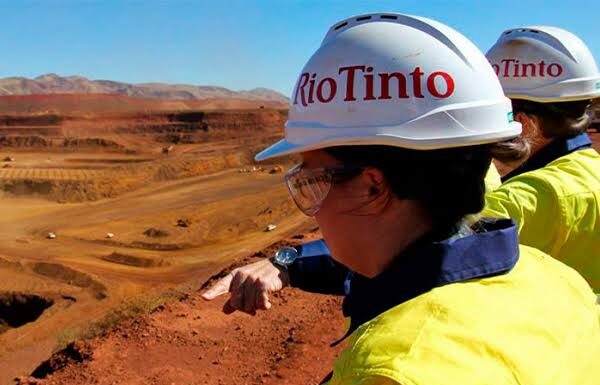
Rio Tinto (ASX:RIO) and Glencore (LON:GLEN) , two of the world’s largest mining companies, have been in discussions about a potential merger, according to sources familiar with the matter. If successful, the deal would reshape the global mining sector, creating a powerful competitor to industry leader BHP. However, the discussions remain preliminary, and there is no certainty that a deal will be reached.
Rio Tinto is the world’s second most valuable mining company, with a market capitalization of $103 billion as of Thursday. It is one of only two miners, alongside its Melbourne-based counterpart BHP, to surpass the $100 billion valuation mark. Glencore, which is currently valued at $55 billion, has been active in mergers and acquisitions, notably making an unsuccessful bid for Canada’s Teck Resources in 2023.
A Rio Tinto-Glencore merger would create a mining giant with a combined market value exceeding $150 billion, surpassing BHP’s current valuation of $125 billion. This would make the new entity the largest mining company in the world, reshaping competition at the top of the industry.
The primary driver behind the talks is copper, a metal essential for the global transition to renewable energy. Copper demand is expected to rise due to its role in electric vehicles, power grids, and renewable energy infrastructure. If combined, Rio Tinto and Glencore’s copper production would rival BHP’s output. Glencore’s 2024 copper production guidance is around 1 million tonnes, while Rio Tinto is targeting up to 720 kilotonnes.
A History of Mergers and Missed Opportunities
This is not the first time Glencore has pursued a high-profile merger. In 2014, the company, under then-CEO Ivan Glasenberg, attempted to merge with Rio Tinto, but the proposal was swiftly rejected. That move came just two years after Glencore’s $90 billion acquisition of Xstrata, which transformed it from a trading-focused company into a mining powerhouse.
Glencore itself became a major player in mining after Xstrata had earlier failed in its attempt to merge with Anglo American in 2009. The Anglo-Xstrata merger never materialized after Anglo rejected the deal outright.
Rio Tinto, meanwhile, has had its own struggles with major acquisitions. In 2007, it bought Canadian aluminum giant Alcan for $38 billion, paying a steep 65% premium to outbid competitors. However, as commodity prices declined, the deal turned into a financial disaster, leading to $25 billion in write-downs.
BHP, the world’s largest miner, has also faced regulatory and economic obstacles in its M&A history. In 2008, it attempted a $116 billion takeover of Rio Tinto, but regulators blocked the deal. The onset of the global financial crisis further undermined the feasibility of the acquisition.
Challenges Facing the Mining Industry
The potential Rio Tinto-Glencore merger comes at a turbulent time for the mining industry. The five largest diversified mining companies—BHP, Rio Tinto, Glencore, Vale, and Anglo American—have seen significant declines in their market values. In 2024, they collectively lost $119.7 billion, or 25.3% of their combined value, according to the MINING.COM Top 50 ranking.
Much of this decline is due to falling prices for key commodities such as copper and iron ore. A strong U.S. dollar in the final months of 2024 exacerbated these losses, particularly for miners operating in currencies that weakened against the dollar.
Vale has been the hardest hit, losing 44.9% of its market value in 2024. The Brazilian mining giant, which was worth more than $100 billion in 2022, has seen its market capitalization shrink to $37.7 billion. Indonesian miner Amman Mineral has now surpassed Vale in the global ranking.
Anglo American, despite facing its own struggles, was the only one of the traditional “Big 5” miners to end 2024 in positive territory, gaining $5.5 billion, or 18.1%, in value. Some of that increase may have been driven by lingering effects from BHP’s previous interest in acquiring the company.
The Role of Iron Ore in Mining’s Boom and Bust Cycle
Unlike its competitors, Glencore does not mine iron ore, which has historically been the primary driver of profits for the largest mining companies. China’s infrastructure boom has been the backbone of iron ore demand, with the country consuming around 80% of seaborne iron ore shipments.
During the peak of the commodity boom in 2011, iron ore generated record profits for the top miners. That year, BHP recorded a pre-tax profit of $24 billion from iron ore alone, while Vale earned $23 billion, Rio Tinto made $15 billion, and Anglo American secured $11 billion.
However, the iron ore market has cooled significantly. Prices have fallen back to double-digit levels, and a combination of increased supply and China’s prolonged construction slowdown has dampened hopes of a recovery.
If Rio Tinto and Glencore move forward with a merger, they will face regulatory scrutiny from multiple jurisdictions. Given the global significance of their operations, any deal would likely be reviewed by competition authorities in Australia, the UK, the European Union, and other key markets.
The above references an opinion and is for information purposes only. It is not intended to be investment advice. Seek a licensed professional for investment advice. The author is not an insider or shareholder of any of the companies mentioned above.
The post Rio Tinto (ASX:RIO) and Glencore (LON:GLEN) in Preliminary Merger Talks to Create BHP Competitor appeared first on MiningFeeds.






